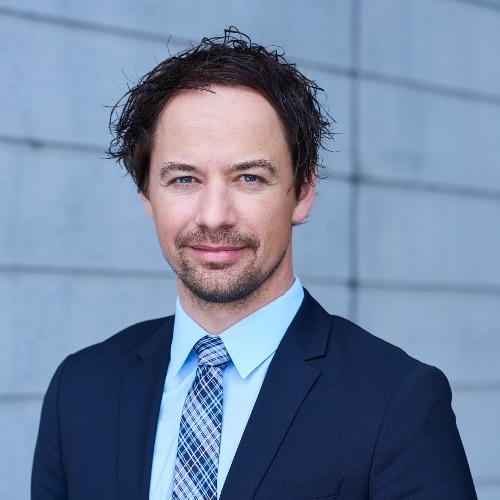Companies are under growing pressure to deliver high value on their investments to develop their business. In parallel, an increasingly complex and fast-changing competitive environment makes accurate financial and resource planning and anticipation very challenging for those responsible for project and product development. Our team of project portfolio specialists has helped entities shift from a pure waterfall and plan-driven portfolio setting to an agile and value-oriented hybrid lean portfolio management approach.
Initial situation and challenge
Our client, a Swiss IT service provider, was encountering increasing requests from stakeholders to disclose the actual value for money of project investments. These investments were funded by the annual budget and included a large number of IT initiatives with either a clear fixed scope (such as regulatory projects) or variable scope. The company’s existing approach posed challenges when it came to adjusting the funding and solution roadmap during the year to account for changing needs.
Against this backdrop, our client initiated various optimisation measures to enhance its project portfolio controlling, initially waterfall-driven, to match the increased transparency requirements from its customers and improve its progress and value reporting. The first step was to take action on the delivery method, implementing an iterative working approach linked to agile principles as described, for example, in the Scaled Agile Framework® (SAFe®). These optimisation measures included transforming the company’s overall portfolio management accordingly.
An important aspect to consider was the fact that estimates of cost and capacity allocation were still tied to yearly planning and long-term budgeting and approval cycles. These processes made it increasingly difficult to estimate the actual finances and resources needed to deliver a project.
The core challenge was therefore to reconcile the new agile approach, striving for a more dynamic planning and decision-making process to guide the portfolio with a transparent view and to align with existing approaches and dependencies as well as with the requirements of the various initiatives spanning a group of related projects from the portfolio.
Our approach & solution
To help our client realise its portfolio ambitions, the first step we took was to gain an in-depth understanding of the organisation’s current structure and its processes. The firm’s starting position was a strong cost-centre view and a plan-oriented project portfolio. We elaborated a future vision of an entity with innovation-oriented areas organised around value streams producing the intended tangible and transparent results.
The idea was that the new portfolio management should be aligned with the development teams’ agile ways of working, following SAFe® principles to produce the intended results of sustained outcomes and more transparency. We also adopted a hybrid approach to maintain purely operational cost centres and also allow the integration of waterfall projects with a fixed scope.
Based on PwC’s portfolio management blueprint, a contextualised summary of the core elements of lean portfolio management (LPM) and our industry experience, we provided insights and trusted advice on setting up the new LPM model. The resulting good practices covered aspects of LPM from a people, process and tool perspective.
Starting from there, we advised our client on rolling out the new LPM according to the company’s specific circumstances, ensuring an effective and integrated function. The value proposition of the new LPM was to incorporate the company’s vision, structure and strategic objectives for the portfolio, combined with the right flow, prioritisation for innovations with the highest value and dynamic funding of investments for its delivery.
The resulting portfolio roadmap includes an outline of mandatory and optional components. The comprehensive LPM view entails the allocation of resources (people and finances) across time to provide a transparent financial outline of the portfolio and ensure timed release cycles. The financial steering is rooted in dynamic and participative budgeting on a rolling-forward basis.
A key consideration was to tailor the LPM function to the overall agile transformation, close gaps and clarify the mutual understanding of terminologies. We thus elaborated a clear view of what was needed in terms of roles, governance, tools and measures to implement a successful but realistic portfolio management approach that could unfold in the context of our client and, most importantly, could be applied successfully.
To assure the quality of the implementation steps we continuously assessed the selected key components of LPM implementation related to strategy, organised around value and portfolio flow of investments in accordance with good practices. We also constantly evaluated overall progress and maturity along the LPM implementation, providing feedback on what to tackle next and successfully leading the implementation.
How lean portfolio management can provide the edge in versatile and demanding market environments.

Value added
Our client aimed to extend its ongoing organisational agile transformation to the portfolio level. Our independent view helped us establish a hybrid lean portfolio management approach linking enterprise strategy, portfolio view and the execution of agile ways of working, following SAFe® principles for the relevant teams, including initiatives with a fixed and variable scope.
In the course of this process we helped the company gain an understanding of key elements to be considered in terms of structure, tools, measures and roles. This enabled it to overcome challenges related to financial and resource planning, based on good practices and our experience of practical and applicable portfolio solutions across industries.
The continuous feedback enabled the client to gain a common understanding and steer a clear course through the transformation journey. This allowed us to adjust and optimise the related processes and tools to make the company’s portfolio management more transparent and align it with investment decisions on a more dynamic and value-oriented basis.
Explore our services
Portfolio and Programme Management
Your experts

Dennis Janssen
Senior Manager, Strategy & Transformation, PwC Switzerland







